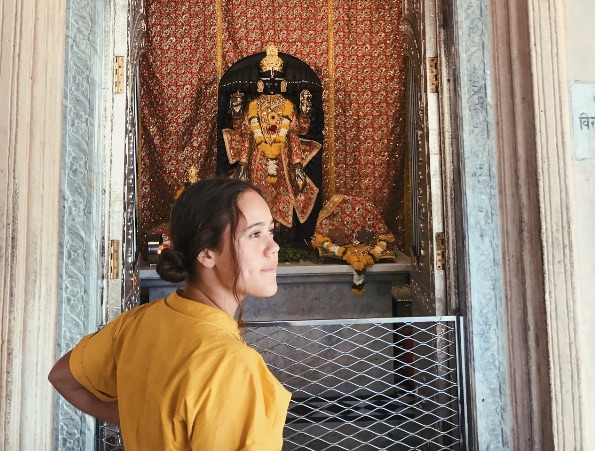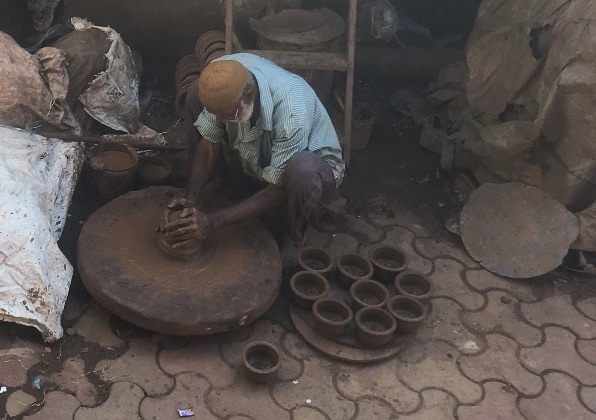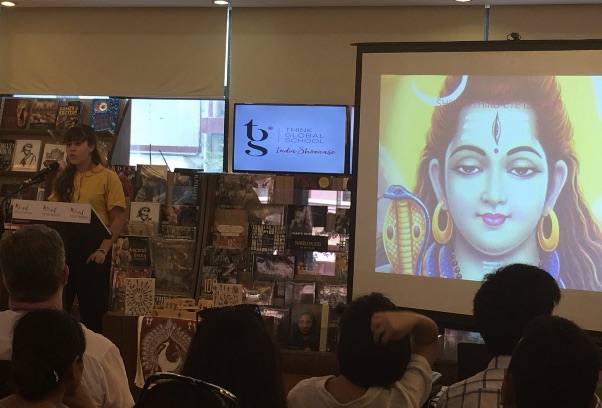As I write this, I'm waiting for our students to return from their weXplore, a five-day excursion that takes students beyond their host city for immersive cultural experiences. For the past two months, we as a school have called Maun, Botswana, our home. It's a small town on the edge of the Okavango Delta and, for many travelers, a doorway into Africa. But Maun is only one perspective, and it...
Read MoreDuring her recent term in Mumbai, India, THINK Global School student Julia G. discovered newfound understandings while learning about revered Hindu gods such as Shiva and Brahma. In her essay “How Shiva and Brahma Taught Me to Be a Skeptical Believer,” she inspires us to transform our own perspectives by deviating from traditional ideologies and creating space for new ideas to flourish.
My parents moved to Valle de Bravo, a small cobblestone town outside of Mexico City, to start a different life before I was born. Their choice was considered bold at the time because they were defying one of the fundamental guidelines ingrained into Mexican society; Most people would never leave the city behind for small town life.

The town of Valle de Bravo, view from the mountain “Monte Alto.”
When the question is “why?”, the answer is usually “because it has always been that way.” By choosing to move away from Mexico City and questioning the vitality of the traditional system, my family constantly demonstrated how to escape standardization while getting to the same place via a different route. They taught me to harness the potential of every opportunity, something I now strive to do as I travel the world with THINK Global School.
Many people strongly disagree with my nontraditional educational pursuits because they are atypical to this popular paradigm. In traveling to different countries, I now have a chance to experiment and learn to value unpopular beliefs rather than disregard the unknown as if it were something alien.
While living and studying in India with THINK Global School, I came across the concept of Shiva and Brahma, two gods in the Hindu triad. Learning about these gods helped me to develop a broader conceptualization of making bold, authentic moves.

Visiting a Hindu temple for the first time
Shiva is known as the destroyer. Despite being the third god, his significance yields any sense of hierarchy. His role is to destroy the universe in order for it to be recreated.
Applying the law of the conservation of matter, Shiva doesn’t destroy matter; Instead, he deconstructs things by turning them back into their essential material, like a clay sculpture back into dust. In doing so, he provides materials and makes space for new things.

A man in the pottery neighborhood of Dharavi, “generating value out of dust”
Brahma,the first god, is known as the creator. He generates value by molding ordinary materials into something contemporary. He is the definition of an artist at its finest.
These gods represent balance and emphasize the connection between the creation of beauty and the destruction of it. Their cycle of constant creation and destruction prevents the world from saturating and becoming stagnant, by allowing movement through transformation. The creator and the destroyer are collaborators, not enemies, and they are equally necessary. To evolve ourselves, we must learn to embody Shiva and Brahma, destroying structures in our lives to make time and space for innovation.
Knowledge is the way we structure our understanding of what we experience. This allows us to create what we’re lacking by transforming what we already have. Inevitably, knowledge that once empowered us will become limiting. When this happens we have to apply the concept of Shiva.
The most defining characteristic of Shiva is that his third eye is open. Through our two eyes we can only see the physical world, but Shiva’s third eye allows him to see something beyond this dimension, such as potential and possibilities.
To grow as humans, we have to pick our perceptions apart to make vacant space and material, to bring concepts into the physical world and forge value. Imagine you are an artist that molds sculptures out of clay. You are given one kilogram of clay to work with for the rest of your life, so you create a sculpture of the idea you find the most relevant and that seems crucial to communicate.
Let’s say you craft a sculpture of a butterfly emerging from a cocoon to represent that there are many chances to transform. Next, you put this sculpture on display. If your message lingers in the thoughts of at least one spectator, its impact becomes exponential. The essence of your art piece will survive on its own. Because a sculpture is only the medium, not the end in itself. Naturally you will imagine another idea that you desire to share.
You will need to prioritize the pursuance of bringing it into the world, and in doing so recognize the urgency of destroying your previous sculpture, in this case your model of the butterfly escaping its cocoon. To refine your dialogue with the external world, you have to believe in the value of destruction and be skeptical about the accuracy and current importance of past creations.
Don’t fool yourself and compromise your progress by conforming to think like most others: “If I had the clay, I would do it.” (E.g. “If I had the time I would do it”.) The clay is always there, but to realize the possibilities that lie beyond what you can see with you own two eyes, you must be willing to feel the discomfort of detaching from what is tangible.
So shatter the shape of your sculpture and make it dust. In doing so you’ll gain a newfound freedom to imagine and create. This is why we should always challenge assumptions, so that our art doesn’t counteract our growth.
By challenging our beliefs, we defy expectations and harness our potential. This allows us to forge value by navigating change and to advance by adapting. As the Greek philosopher Heraclitus said; “The only thing that is constant is change.”
Let’s remember to be skeptical about the veracity of our perceptions so that we can prevent them from becoming restrictions. In this way, we will have the ability to adjust word and action, and refine their accuracy within a transforming world.
Through the hecticness of all this change, we should never lose sight of the Brahma in ourselves, fostering our capacity to generate value out of dust.

Julia presents during the India project-based learning showcase